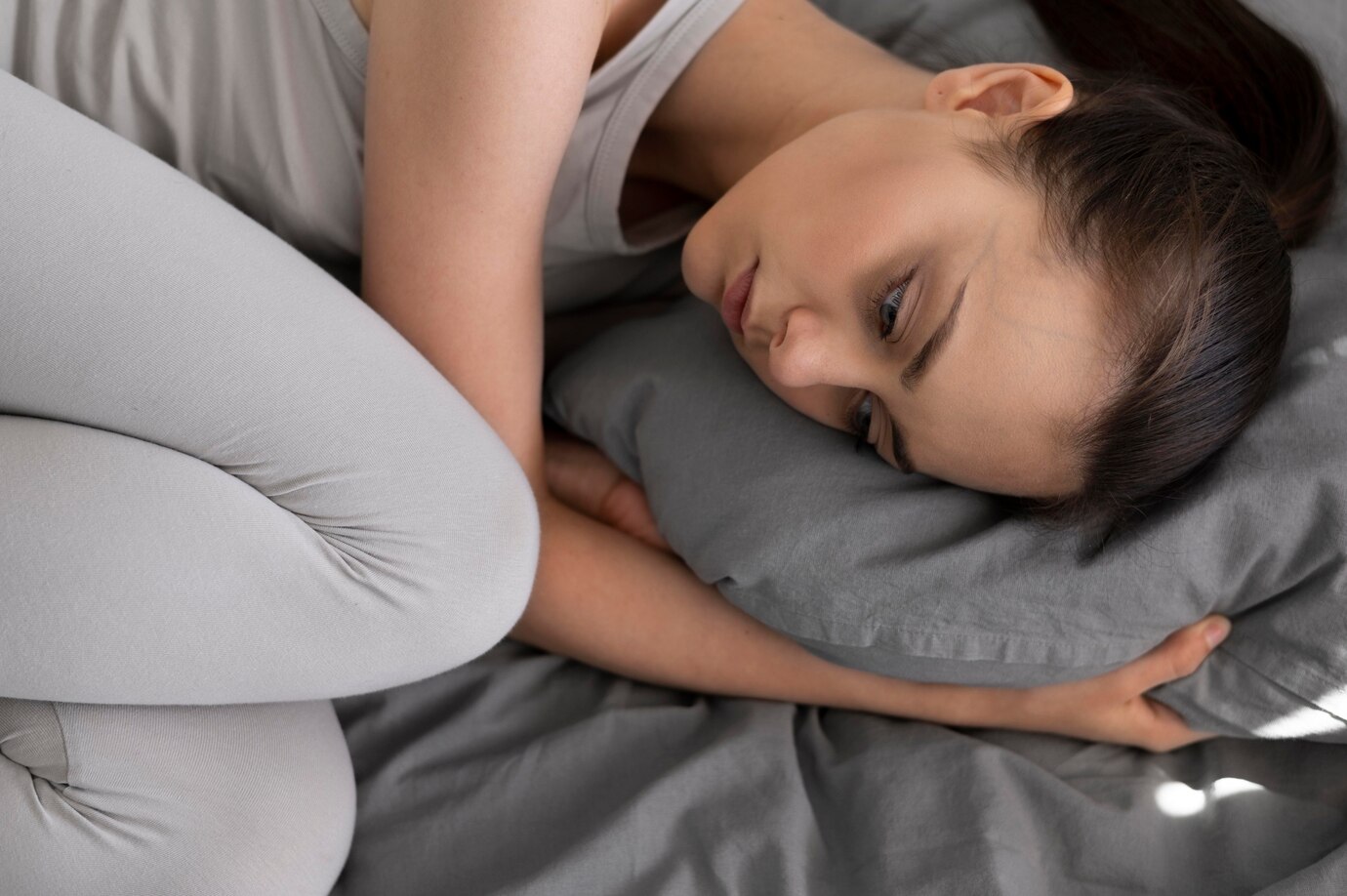Introduction | How Seasonal Shifts Influence Mental Health
Seasonal changes are not just about fluctuating temperatures or longer nights; they deeply affect mental and emotional well-being. These shifts, especially in regions with distinct seasons, can trigger noticeable changes in mood, energy levels, and even cognitive function.
One prominent condition associated with this phenomenon is Seasonal Affective Disorder (SAD), a form of depression linked to reduced sunlight during the fall and winter months. The shorter days and colder weather can disrupt the body’s internal clock, altering the production of mood-regulating hormones like serotonin and melatonin.
While some thrive on seasonal transitions, others experience fatigue, low motivation, or heightened stress, highlighting the varying impact of these changes. In this blog, we’ll explore how seasons influence mental health and provide actionable Seasonal Mental Health Tips to help you maintain balance, no matter the time of year. Whether you’re navigating winter blues, summer stress, or the unpredictability of seasonal transitions, the strategies here aim to support your mental and emotional health year-round.
The Science Behind Seasonal Affective Disorder (SAD)
Seasonal Affective Disorder (SAD) is a form of depression that occurs during specific seasons, most commonly during the fall and winter months. While many people enjoy the changing seasons, for others, the shift into colder months can trigger a variety of emotional and physical symptoms that significantly impact daily life.
Causes of Seasonal Affective Disorder
The primary cause of Seasonal Affective Disorder (SAD) is believed to be the decreased exposure to sunlight that often accompanies the fall and winter months. This lack of sunlight disrupts the body’s circadian rhythm, or internal clock, which plays a key role in regulating sleep and wake cycles.
The circadian rhythm is closely linked to the production of two vital neurotransmitters, serotonin and melatonin, both of which are responsible for mood regulation, sleep, and energy levels. Reduced sunlight exposure can lead to lower serotonin levels, which may contribute to feelings of sadness, fatigue, and a lack of motivation. Additionally, the imbalance in melatonin can disrupt sleep patterns, leading to oversleeping or difficulty maintaining regular sleep cycles.
Symptoms of SAD
The symptoms of SAD often mirror those of major depressive disorder, but they typically emerge seasonally, usually during the fall and winter months. Common signs include persistent sadness, feelings of hopelessness, low energy, difficulty concentrating, and irritability. Individuals with SAD may also experience changes in their sleep patterns, such as oversleeping or feeling unrested after a full night’s sleep.
In some cases, people may crave carbohydrate-rich foods, leading to overeating and weight gain. More severe cases of SAD can result in withdrawal from social interactions, a lack of interest in previously enjoyed activities, and a general feeling of emotional distress.
Who Is Most Affected by SAD?
While Seasonal Affective Disorder can affect anyone, certain groups of people are more vulnerable. It is estimated that about 5% of the U.S. population experiences SAD, with women being significantly more likely to develop this condition than men. Studies indicate that women are four times more likely to be diagnosed with SAD than men, and it is especially prevalent in individuals aged 18 to 30.
Additionally, people living in northern latitudes, where daylight hours are shorter during the winter months, are more prone to SAD. This may be due to the extreme seasonal variation in daylight exposure that occurs in these regions. For example, individuals living in areas such as Alaska, where the winter months experience near-constant darkness, report higher rates of SAD compared to those living in southern states with more consistent sunlight throughout the year.
Understanding the Science of Seasonal Affective Disorder (SAD)
The development of SAD is complex and can involve multiple contributing factors, including genetics, biological rhythms, and environmental conditions. For instance, a family history of depression or other mood disorders can increase the likelihood of developing SAD. Moreover, those who have experienced major depressive episodes in the past are more likely to be affected during the changing seasons.
Understanding the science behind SAD is crucial in identifying its symptoms early and applying effective treatments such as light therapy, cognitive behavioral therapy, and, in some cases, medication.

How Different Seasons Impact Mental Health
1. Winter: Coping with Darkness and Isolation
- Short days and cold temperatures can lead to feelings of isolation and lethargy.
- Low vitamin D levels during winter exacerbate depressive symptoms.
- Strategies: Incorporate light therapy, spend time outdoors during daylight, and maintain social connections to mitigate winter blues.
2. Spring: Transition Challenges
- While spring is often seen as uplifting, some people experience heightened anxiety during seasonal transitions.
- Strategies: Gradually adjust routines to align with increasing daylight, and practice mindfulness to stay grounded.
3. Summer: Heat and Sleep Disturbances
- Hot weather and longer days can trigger irritability or exacerbate conditions like anxiety.
- Strategies: Stay hydrated, use cooling techniques, and create a sleep-friendly environment to combat summer stressors.
4. Autumn: Preparing for Seasonal Shifts
- The shift from summer to fall can feel like a loss, leading to low mood and reduced energy.
- Strategies: Reflect on positive summer experiences, engage in seasonal activities, and prepare mentally for shorter days.
Seasonal Mental Health Tips for 2025
- Light Therapy
Invest in a light therapy box to simulate natural sunlight during darker months. Use it for 20-30 minutes daily to improve mood and energy levels. - Maintain a Routine
Establish a consistent schedule for sleep, meals, and physical activity to stabilize your circadian rhythm. - Prioritize Nutrition
Include foods rich in omega-3s, vitamin D, and magnesium to support brain health. Seasonal produce like citrus fruits and leafy greens is are excellent option. - Stay Physically Active
Regular exercise, even indoors, boosts endorphins and helps counteract seasonal fatigue. Yoga, walking, and strength training are great options. - Embrace Seasonal Activities
Engage in activities unique to each season, such as skiing in winter or hiking in fall, to build a positive connection with the time of year. - Seek Professional Support
Don’t hesitate to consult a therapist or counselor if seasonal changes significantly affect your mental health.
Lifestyle Adjustments for Long-Term Resilience
1. Build a Support System
Having a reliable network of friends or family can provide emotional stability throughout seasonal shifts.

2. Mindfulness Practices
Meditation and journaling are powerful tools to manage anxiety and foster a sense of control, regardless of the season.
3. Leverage Technology
Mental health apps like Headspace or Calm offer guided meditations and mood-tracking features tailored for seasonal challenges.
4. Monitor Your Mood
Keep a journal to track how your mood changes with the seasons. Recognizing patterns can help you plan proactive strategies.
Trends in Seasonal Mental Health for 2025
As we move toward 2025, mental health practices aimed at managing the seasonal impacts of mood and emotional well-being continue to evolve. Innovative solutions, greater awareness, and better approaches are becoming central in addressing the mental health challenges that arise during the seasonal shifts. Here are some of the key trends to watch in the coming year:
Innovative Light Therapy Devices
Light therapy has long been a proven treatment for managing Seasonal Affective Disorder (SAD), but 2025 is set to witness a surge in more advanced and accessible light therapy options. Portable, wearable light therapy devices are increasingly becoming mainstream, offering a convenient solution for individuals who experience SAD or those affected by lower levels of sunlight in the winter months.
These devices, often small and compact, can be worn as a headset or a clip-on accessory, providing a steady dose of bright light to help regulate circadian rhythms. By making light therapy more portable and integrated into daily life, these devices ensure that users can continue their treatments wherever they go, improving consistency and effectiveness.
Also Read: How Sports and Physical Activities Improve Mental Health
Comprehensive Wellness Programs
In response to the growing demand for comprehensive mental health care, wellness programs are gaining significant traction for their ability to address mental health issues related to the changing seasons.
These integrated programs go beyond traditional therapy to include a combination of physical exercise, proper nutrition, mindfulness practices, and social support to foster overall well-being. The idea is that mental health is deeply connected to physical health, and by adopting a multifaceted approach, individuals can manage the psychological challenges of the season more effectively.
For example, combining light therapy with mindfulness-based stress reduction (MBSR), or pairing outdoor exercise with social connection, can help tackle seasonal depression and other mood issues comprehensively.
Increased Awareness of Climate Change Effects
As the effects of climate change become more pronounced, the link between weather patterns and mental health is receiving increased attention. More researchers and health professionals are studying how changes in climate, such as prolonged cold spells, extreme heatwaves, or unpredictable weather patterns, can influence mental health, particularly during seasonal transitions.
The rise of awareness about climate change’s mental health implications reflects a growing understanding that environmental factors play a significant role in our well-being. This awareness is prompting individuals to consider how changing weather might affect their mood and mental health, driving the need for adaptive coping strategies, such as increasing indoor lighting or adjusting sleep routines during months of extended darkness.
Real-Life Case Studies of SAD
Emily’s Story | Battling Winter SAD
Emily, a high school teacher from Minnesota, had long struggled with Seasonal Affective Disorder (SAD) every winter. The long, dark months left her feeling drained, irritable, and less motivated. However, after discovering the benefits of light therapy, she decided to give it a try. Emily incorporated a daily 20-minute light therapy session into her morning routine, and within a few weeks, she noticed a significant improvement in her mood and energy levels.
Along with the therapy, she also started taking regular walks outside during daylight hours, which further boosted her vitamin D levels and gave her the opportunity to embrace the winter landscape. Over time, Emily found that these small adjustments helped her manage the seasonal shift, allowing her to feel more like herself throughout the colder months.

John’s Journey | Overcoming Summer Anxiety
John, a business owner from Texas, never thought much about how the hot, humid summers affected his mental health until he noticed a pattern of heightened anxiety during the warmer months. The sweltering heat and long days made him feel restless, and he struggled to find relief. After recognizing the connection between summer and his anxiety, John made a few key changes.
He started scheduling outdoor activities, like exercise or social events, during the cooler hours of the early morning or evening. Prioritizing hydration throughout the day also became a priority, as he learned how dehydration could exacerbate his anxiety. These simple yet impactful adjustments allowed him to better cope with the challenges of summer, turning a previously stressful time into one of greater balance and well-being.
Final Thoughts | How Seasonal Changes Affect Mental Health
Seasonal changes can have a significant impact on mental health, but they don’t have to define your well-being. By incorporating the Seasonal Mental Health Tips discussed in this guide, you can proactively manage your emotional health throughout the year.
2025 is the year to prioritize your mental resilience. By taking control of how you respond to seasonal shifts and using modern tools like telehealth or wellness apps, you’ll be better equipped to maintain emotional balance no matter the season.
Don’t wait for the seasons to overwhelm you, set yourself up for success by establishing healthy habits that support your mental health year-round. Make self-care a year-round commitment, and embrace each season with confidence, knowing that your mental well-being is in your hands. Stay informed, stay inspired, and keep prioritizing your mental well-being throughout 2025!
Thank you for exploring this guide on Seasonal Mental Health with us! If you have any thoughts, questions, or feedback, feel free to share them in the comments below or reach out to us directly. We’re here to support you and would love to hear your experiences and insights. Remember, taking care of your mental health across seasons is a continuous journey, and we’re here to help you navigate it with practical tips and advice!
You might also like…
- Active Recovery for CrossFitters: Walking & Mobility Explained
 CrossFit pushes athletes to their physical limits, lifting heavy, sprinting, jumping, and performing high-intensity functional movements. While the intensity delivers impressive gains, it also places tremendous stress on muscles,… Read more: Active Recovery for CrossFitters: Walking & Mobility Explained
CrossFit pushes athletes to their physical limits, lifting heavy, sprinting, jumping, and performing high-intensity functional movements. While the intensity delivers impressive gains, it also places tremendous stress on muscles,… Read more: Active Recovery for CrossFitters: Walking & Mobility Explained - How Walking and Stretching Boost CrossFit Recovery (Duo)
 CrossFit recovery, athletes often chase intensity, heavy lifts, quick transitions, and heart-racing WODs (Workouts of the Day). Yet, the key to consistent progress isn’t just in the effort you… Read more: How Walking and Stretching Boost CrossFit Recovery (Duo)
CrossFit recovery, athletes often chase intensity, heavy lifts, quick transitions, and heart-racing WODs (Workouts of the Day). Yet, the key to consistent progress isn’t just in the effort you… Read more: How Walking and Stretching Boost CrossFit Recovery (Duo) - How Nutrition Impacts Sleep: Foods That Help (and Hurt) Your Night’s Rest
 You Are What – and When – You Eat We often think of sleep as a nighttime habit, but the truth is that good sleep begins with what you… Read more: How Nutrition Impacts Sleep: Foods That Help (and Hurt) Your Night’s Rest
You Are What – and When – You Eat We often think of sleep as a nighttime habit, but the truth is that good sleep begins with what you… Read more: How Nutrition Impacts Sleep: Foods That Help (and Hurt) Your Night’s Rest

Kait Amazra is the founder and lead writer of Active Health Sport. With over 25 years of experience in health, fitness, and wellness education, Kait combines professional expertise with a passion for helping people live stronger, healthier, and more balanced lives.
As a licensed health and fitness professional, Kait has worked alongside industry experts to deliver evidence-based insights on physical activity, nutrition, recovery, and holistic well-being. Through Active Health Sport, Kait’s mission is to make trusted, practical, and science-backed health information accessible to everyone, from beginners building new habits to athletes seeking peak performance.


Thank you for your sharing. I am worried that I lack creative ideas. It is your article that makes me full of hope. Thank you. But, I have a question, can you help me?